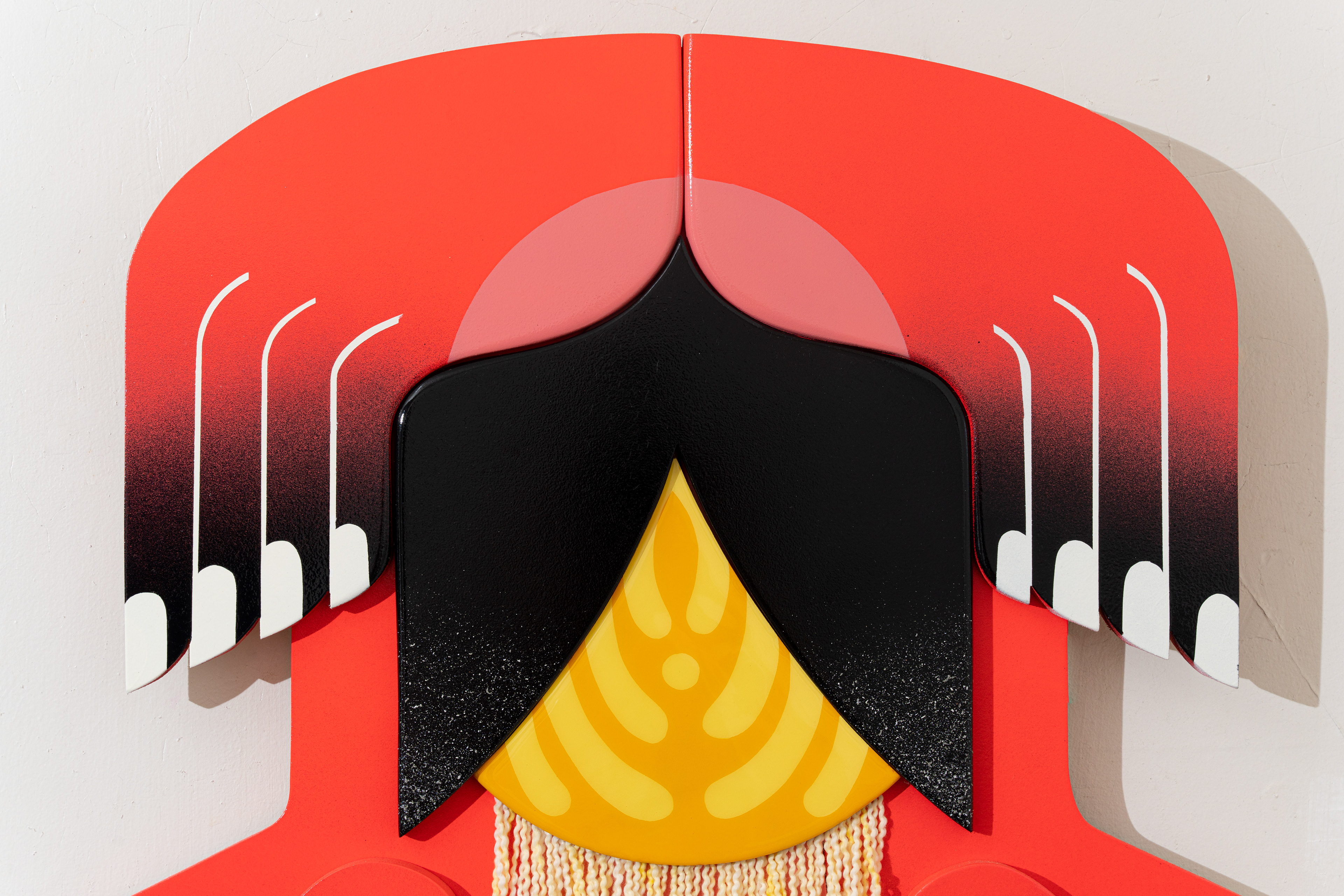'The Palm Tree' 2022
41" x 30"
Wood, spray paint, dyed yarn
Palmistry, also known as palm reading, chiromancy, or chirology, is the practice of fortune-telling through the study of the palm. The practice is found all over the world, with numerous cultural variations. Those who practice chiromancy are generally called palmists, hand readers, hand analysts, or chirologists.
The acupuncturist Yoshiaki Omura describes its roots in Hindu astrology , Chinese I Ching, and Roma fortune tellers. Several thousand years ago, the Hindu sage Valmiki is thought to have written a book comprising 567 stanzas, the title of which translates in English as The Teachings of Valmiki Maharshi on Male Palmistry. From India, the art of palmistry spread to China, Tibet and to other countries in Europe.
Palmistry also progressed independently in Greece where Anaxagoras practiced it. Aristotle (384–322 B.C.E.) reportedly discovered a treatise on the subject of palmistry on an altar of Hermes, which he then presented to Alexander the Great (356–323 B.C.E.), who took great interest in examining the character of his officers by analyzing the lines on their hands.
Photos courtesy Will Crooks.



